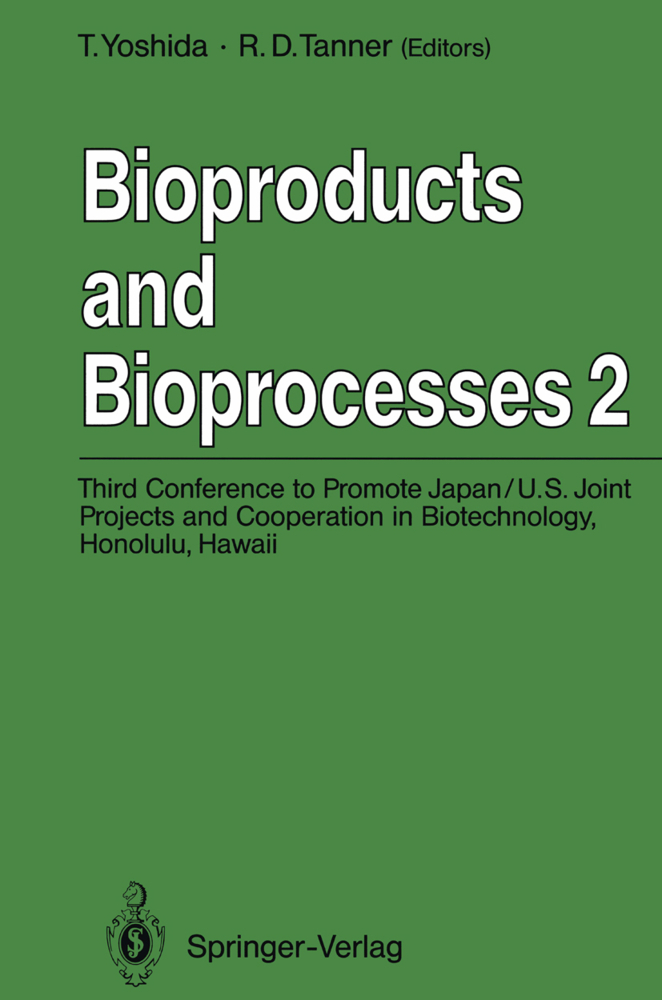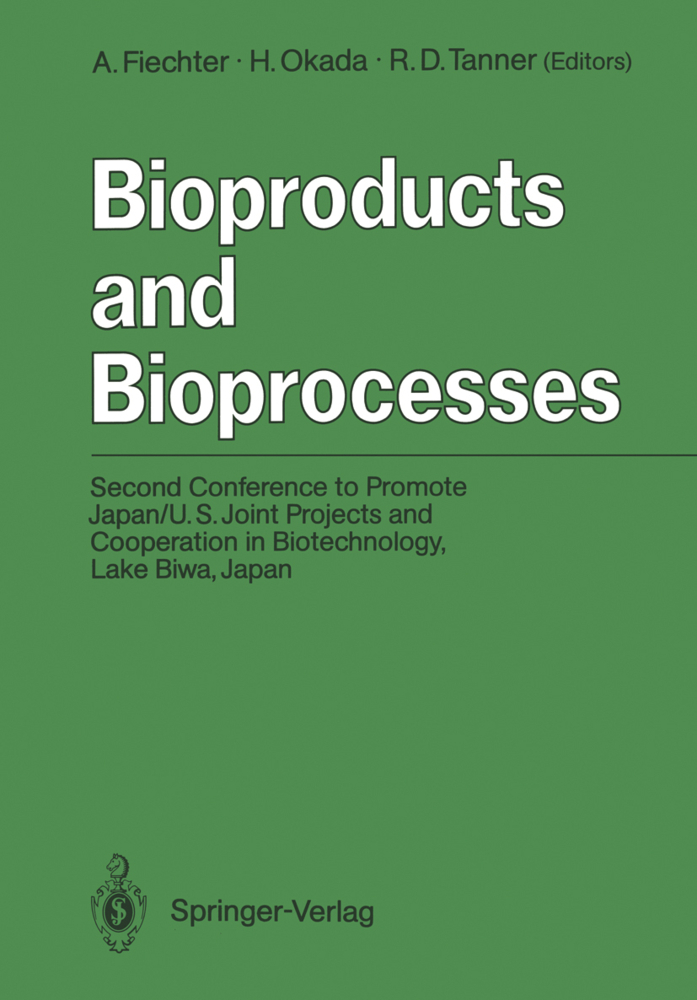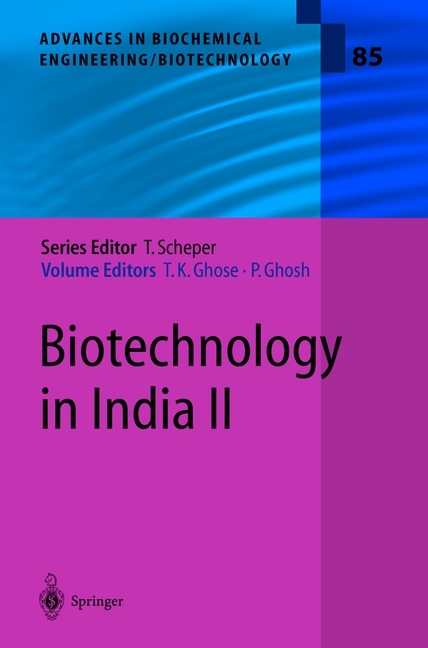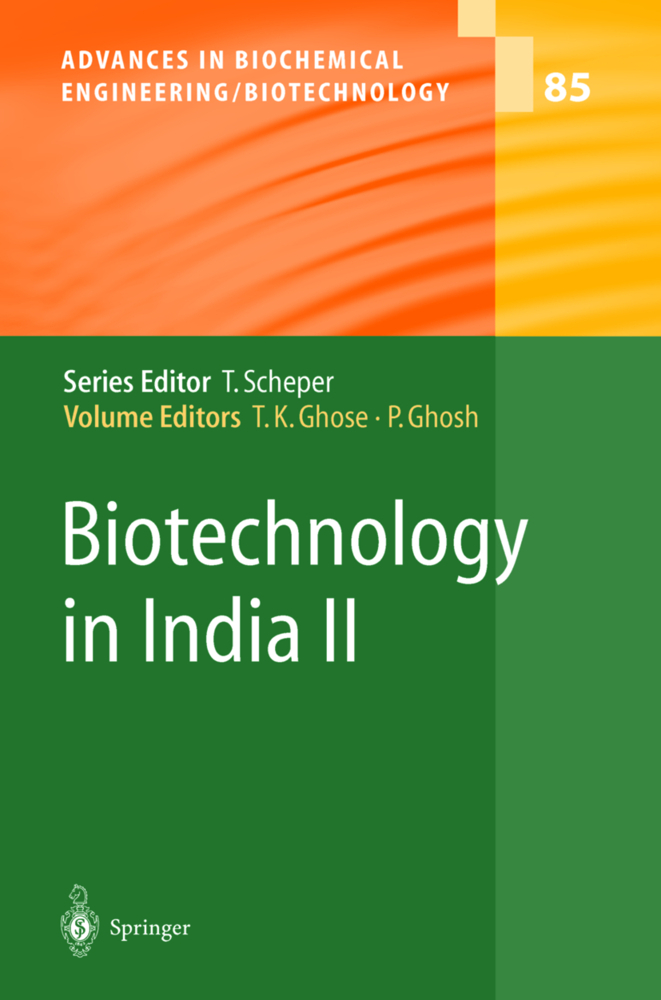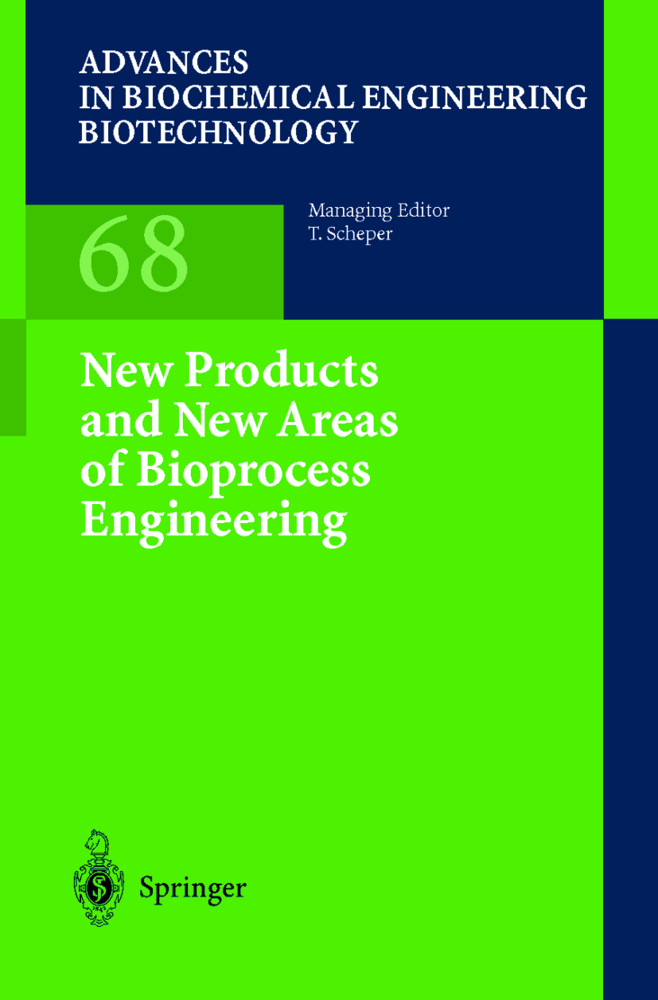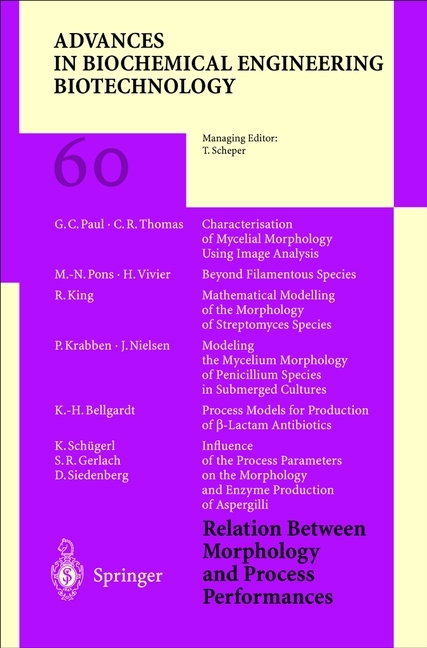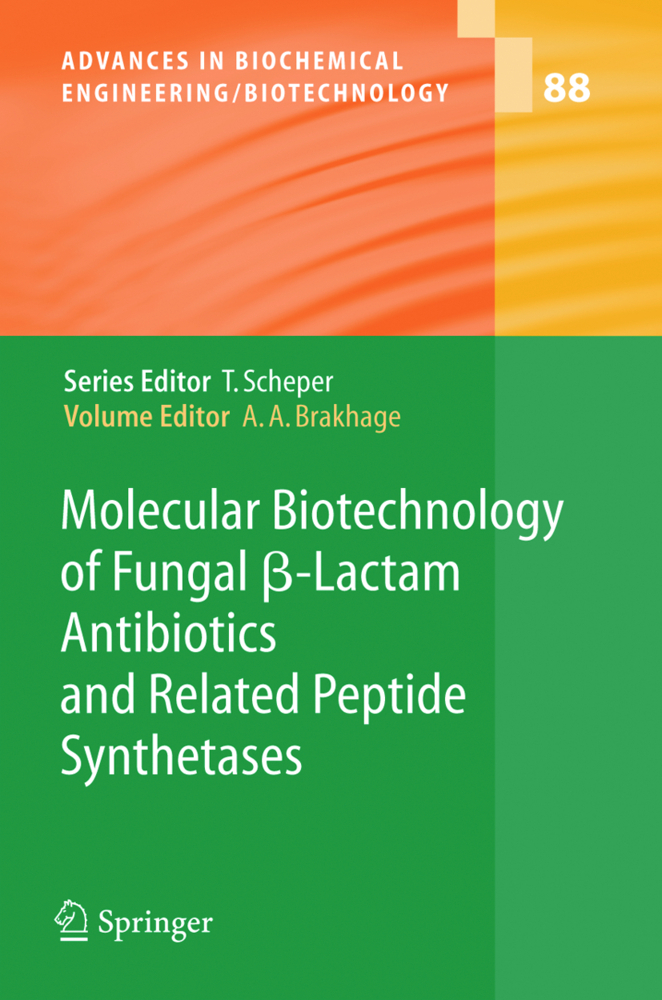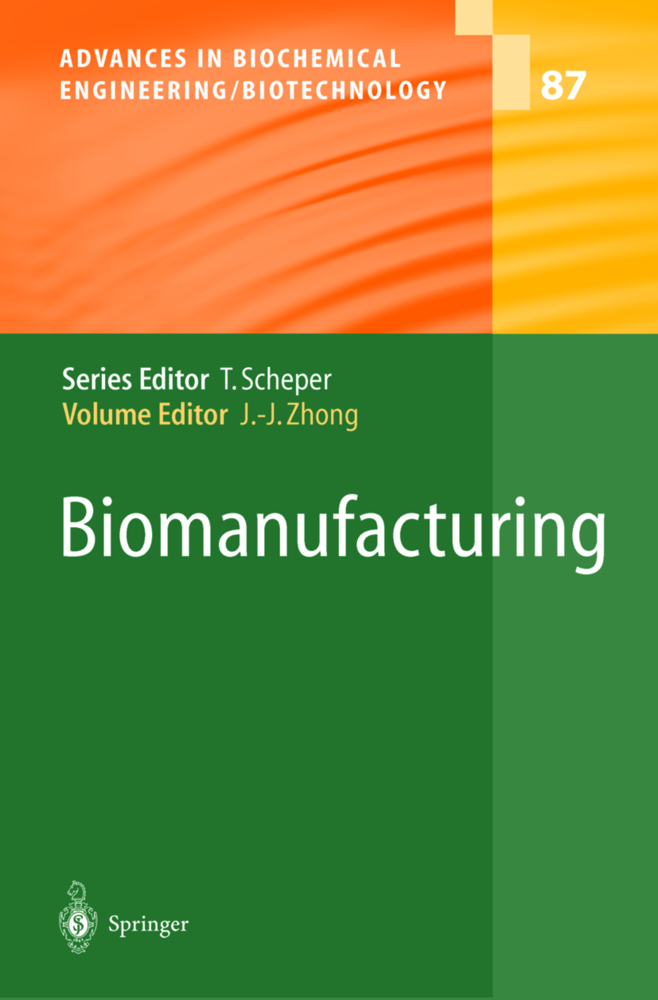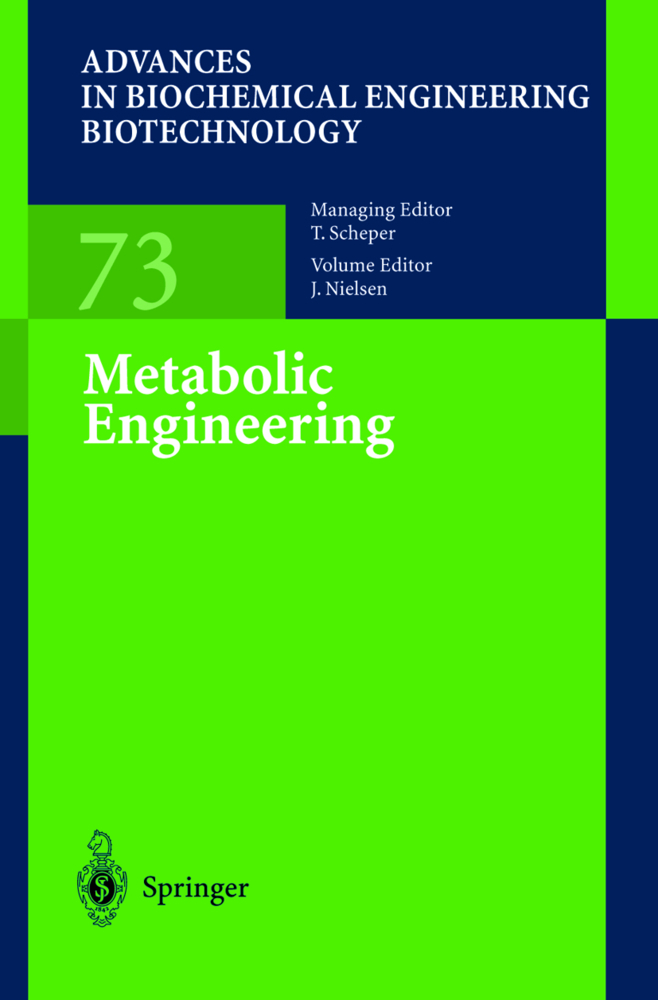Bioproducts and Bioprocesses 2
Third Conference to Promote Japan/U.S. Joint Projects and Cooperation in Biotechnology, Honolulu, Hawaii, January 6-10, 1991
Bioproducts and Bioprocesses 2
Third Conference to Promote Japan/U.S. Joint Projects and Cooperation in Biotechnology, Honolulu, Hawaii, January 6-10, 1991
Introduction During the week of January 6-10, 1991, the Third U.S.-Japan Conference on Biotechnology was held at the Asian-Pacific Conference Center at the Univer sity of Hawaii in Honolulu. This book is a compilation of the papers and posters presented at the Conference. The Conference was sponsored, in part, by the U.S. pharmaceutical companies including National Science Foundation and Ortho Pharmaceutical, Merck, Genentech, Smith Kline Beecham and ABEe. Its purpose was to promote information exchange between Japanese and U.S. researchers, primarily academics, in biotechnology and to seek ways to carry out collaborative research in biotechnology. The honorary chairmen of the Conference were Professor H. Okada and me. The formal program was organized by Professors 1. Bailey and T. Yoshida. Twelve invited formal presentations were given from each side. In addition, both sides were invited to bring along five observers to the Conference who were encouraged to prepare poster presentations on their research. Paper abstracts plus bibliographies were exchanged prior to the Conference in order to promote maximum technical interaction between the participants.
1.2 Use of Fluorometry for On-Line Monitoring and Control of Bioreactors
1.3 Computer Control of Glutamic Acid Production Based on Fuzzy Clustering of Culture Phases
1.4 National Science Foundation Engineering Centers Division- Biotechnology and Bioengineering Research Centers
1.5 The Effect of Glutathione Depletion in the Glutamine Synthetase Gene Amplification System
1.6 Modeling Vapor Phase Water Droplet Extraction of Proteins from the Medium of an Air Fluidized Bioreactor
2 Applied Genetic Engineering
2.1 Genetic Engineering and Protein Engineering on Chymosin and Mucor Rennin
2.2 Genetic Engineering of Carbon and Energy Metabolism
2.3 Microbial Production of Useful Compounds with recDNY Technique
2.4 Amplification of Homologous Fermentative Genes in Clostridium Acetobutylicum ATCC 824
2.5 Cloning and Sequencing of the Alcohol Dehydrogenase Gene from Bacillus stearothermophilus and Alteration of the Optimum pH of the Enzyme by Protein Engineering
2.6 Bioprocess Kinetics and Optimization of Recombinant Fermentation: Genetic and Engineering Approaches
3 Biocatalysis
3.1 Comparison of Primary, Secondary and Tertiary Structures of Xylanase of Bacillus pumilus and Cellulase of Aspergillus acleatus
3.2 Synthesis of Chiral Intermediates for D-Pantothenate Production by Microbial Enzymes
3.3 Mechanistic Aspects of Enzymatic Catalysis in Anhydrous Organic Solvents
3.4 Construction of a Novel Biocatalyst Based on an Organelle Model-Expression of the Latent Function of the Enzyme by Organized Assemblies
3.5 Enzyme Catalysis in Unusual Environments
3.6 Preparation and Characterization of Semisynthetic Oxidases
4 BioprocessEngineering
4.1 On-line Diagnosing System for Fed-Batch Fermentation
4.2 Sensors for Bioprocess Monitoring and Control
4.3 Development of Micro-Biosensors for Brain Research
4.4 Application of 2-D Gel Electrophoresis to Study Intracellular Events in Industrial Fermentations
4.5 A Knowledge-Based Approach for Control of Phenylalanine Pro¬duction by a Recombinant Eschirichia coli
4.6 Modulator Sorption in Gradient Elution Chromatography
5 Cell Culture
5.1 Strategies for Improving Productivity in Plant Cell, Tissue, and Organ Culture in Bioreactors
5.2 Genetic Engineering of Medicinal Plants
5.3 Engineering Growth Factor/Receptor Processes: Effects of EGF Receptor Trafficking Dynamics on Cell Proliferation Responses to EGF
5.4 The Effect of Light Irradiation on Secondary Metabolite Production by Coffea arabica Cells
5.5 A Model for Embryo Development in Dicotyledonous Plants
5.6 Kinetics of Hybridoma Cell Growth in Continuous Culture
5.7 Development of New Immobilization Method and Continuous Pro¬duction of Bioproducts in Immobilized Mammalian Cell System.
1 Biochemical Engineering and Biotechnology
1.1 Biochemical Engineering and Biotechnology-An NSF Perspective1.2 Use of Fluorometry for On-Line Monitoring and Control of Bioreactors
1.3 Computer Control of Glutamic Acid Production Based on Fuzzy Clustering of Culture Phases
1.4 National Science Foundation Engineering Centers Division- Biotechnology and Bioengineering Research Centers
1.5 The Effect of Glutathione Depletion in the Glutamine Synthetase Gene Amplification System
1.6 Modeling Vapor Phase Water Droplet Extraction of Proteins from the Medium of an Air Fluidized Bioreactor
2 Applied Genetic Engineering
2.1 Genetic Engineering and Protein Engineering on Chymosin and Mucor Rennin
2.2 Genetic Engineering of Carbon and Energy Metabolism
2.3 Microbial Production of Useful Compounds with recDNY Technique
2.4 Amplification of Homologous Fermentative Genes in Clostridium Acetobutylicum ATCC 824
2.5 Cloning and Sequencing of the Alcohol Dehydrogenase Gene from Bacillus stearothermophilus and Alteration of the Optimum pH of the Enzyme by Protein Engineering
2.6 Bioprocess Kinetics and Optimization of Recombinant Fermentation: Genetic and Engineering Approaches
3 Biocatalysis
3.1 Comparison of Primary, Secondary and Tertiary Structures of Xylanase of Bacillus pumilus and Cellulase of Aspergillus acleatus
3.2 Synthesis of Chiral Intermediates for D-Pantothenate Production by Microbial Enzymes
3.3 Mechanistic Aspects of Enzymatic Catalysis in Anhydrous Organic Solvents
3.4 Construction of a Novel Biocatalyst Based on an Organelle Model-Expression of the Latent Function of the Enzyme by Organized Assemblies
3.5 Enzyme Catalysis in Unusual Environments
3.6 Preparation and Characterization of Semisynthetic Oxidases
4 BioprocessEngineering
4.1 On-line Diagnosing System for Fed-Batch Fermentation
4.2 Sensors for Bioprocess Monitoring and Control
4.3 Development of Micro-Biosensors for Brain Research
4.4 Application of 2-D Gel Electrophoresis to Study Intracellular Events in Industrial Fermentations
4.5 A Knowledge-Based Approach for Control of Phenylalanine Pro¬duction by a Recombinant Eschirichia coli
4.6 Modulator Sorption in Gradient Elution Chromatography
5 Cell Culture
5.1 Strategies for Improving Productivity in Plant Cell, Tissue, and Organ Culture in Bioreactors
5.2 Genetic Engineering of Medicinal Plants
5.3 Engineering Growth Factor/Receptor Processes: Effects of EGF Receptor Trafficking Dynamics on Cell Proliferation Responses to EGF
5.4 The Effect of Light Irradiation on Secondary Metabolite Production by Coffea arabica Cells
5.5 A Model for Embryo Development in Dicotyledonous Plants
5.6 Kinetics of Hybridoma Cell Growth in Continuous Culture
5.7 Development of New Immobilization Method and Continuous Pro¬duction of Bioproducts in Immobilized Mammalian Cell System.
Yoshida, Toshiomi
Tanner, Robert D.
| ISBN | 978-3-642-49362-1 |
|---|---|
| Artikelnummer | 9783642493621 |
| Medientyp | Buch |
| Auflage | Softcover reprint of the original 1st ed. 1993 |
| Copyrightjahr | 2012 |
| Verlag | Springer, Berlin |
| Umfang | XIII, 309 Seiten |
| Abbildungen | XIII, 309 p. 33 illus. |
| Sprache | Englisch |

